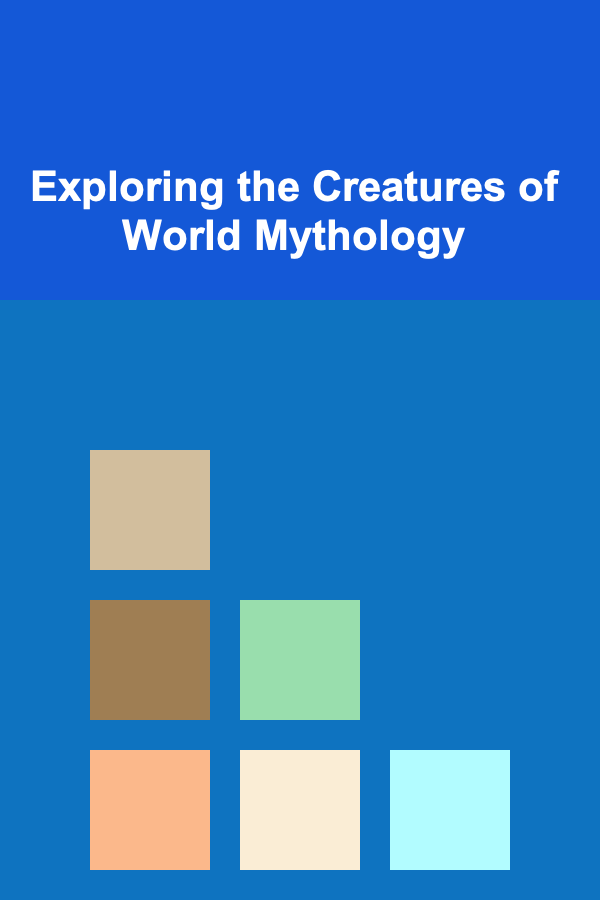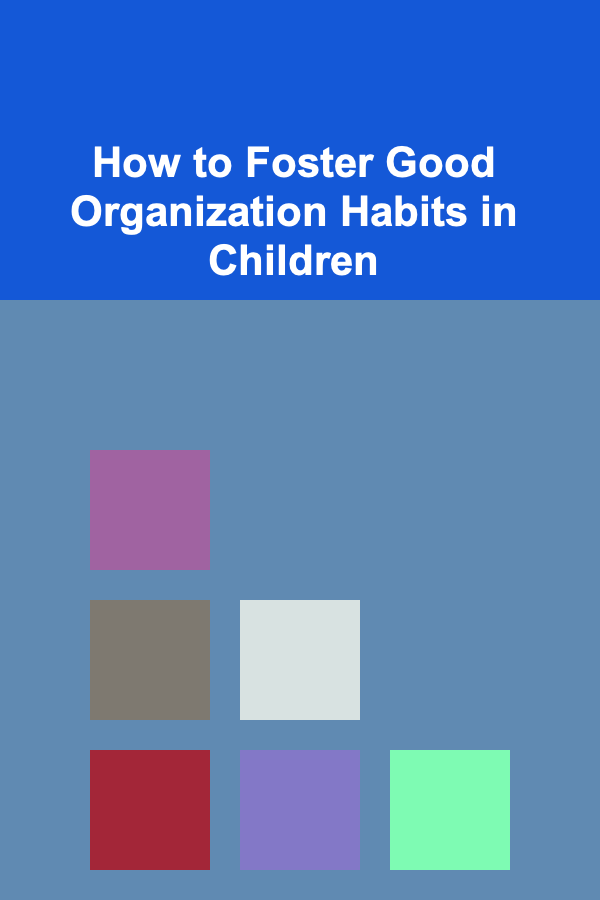
Exploring the Creatures of World Mythology
ebook include PDF & Audio bundle (Micro Guide)
$12.99$9.99
Limited Time Offer! Order within the next:

Mythology, at its heart, is a reflection of humanity's attempt to understand the world around us. It's a tapestry woven with stories of creation, destruction, morality, and the inexplicable forces that govern existence. And within this tapestry, creatures both terrifying and wondrous hold a prominent place. These mythical beasts, drawn from the collective imagination, offer a rich window into the cultures that birthed them. Exploring them is not merely an exercise in fantasy; it's an exploration of the human condition, our fears, hopes, and the persistent need to define our place within the cosmos.
This exploration is a multifaceted endeavor, requiring a blend of historical context, cultural sensitivity, and a willingness to embrace the symbolic language embedded within these narratives. Let's delve into the approaches and considerations crucial for unraveling the mysteries of mythical creatures across diverse cultures.
I. Understanding the Context: Culture, History, and Environment
Before diving into the specifics of any mythical creature, it's paramount to understand the cultural, historical, and environmental context in which it arose. These creatures aren't simply figments of imagination; they're products of a specific worldview, often deeply intertwined with the daily lives, beliefs, and survival strategies of the people who envisioned them.
A. The Cultural Lens: Belief Systems and Social Structures
A creature's role within a mythology is directly linked to the prevailing belief system. Is the culture polytheistic, monotheistic, or animistic? The answer will shape the creature's relationship with gods, humans, and the natural world. For instance, in Greek mythology, creatures like the Minotaur or the Hydra are often punishments from the gods, reflecting the consequences of hubris or disobedience. In contrast, in some indigenous cultures, animals are seen as spirits or guardians, holding a sacred place within the ecosystem and possessing abilities humans lack.
Furthermore, social structures influence how creatures are perceived. Hierarchical societies may project their own hierarchies onto the animal kingdom, with certain creatures representing power, authority, or nobility (think of the lion in many cultures, or the dragon in imperial China). Conversely, cultures that value community and cooperation may feature creatures that embody these traits.
B. Historical Influences: Migration, Trade, and Warfare
Historical events like migrations, trade routes, and warfare can significantly impact the development and spread of mythical creatures. The exchange of ideas and stories between different cultures often leads to the blending and adaptation of existing myths. For example, the griffin, a creature with the body of a lion and the head of an eagle, is believed to have originated in the Near East and subsequently spread to Greece, where it became associated with guarding treasure and representing divine power. The Silk Road, a conduit for trade and cultural exchange, undoubtedly played a role in disseminating mythological concepts and hybrid creatures across Eurasia.
Warfare, too, can shape the perception of mythical creatures. Animals associated with ferocity, strength, and strategic prowess may be elevated to mythical status, serving as symbols of national identity or military might. Conversely, times of upheaval and social unrest may give rise to creatures that embody chaos, destruction, and the fears of the unknown.
C. Environmental Factors: Geography and Ecology
The natural environment plays a crucial role in shaping the creatures that inhabit a culture's mythology. The geography, climate, and flora and fauna of a region often provide the raw materials for the creation of these beings. Cultures living in close proximity to the sea may feature creatures like mermaids, sea serpents, or krakens, while those in mountainous regions might tell tales of giants, mountain spirits, or creatures adapted to high-altitude environments.
Ecological relationships, too, find their way into mythology. Creatures that represent the balance of nature, the cyclical patterns of life and death, or the consequences of disrupting the environment often serve as cautionary tales. For instance, stories of shapeshifting animals may reflect an understanding of the interconnectedness of all living things, while tales of vengeful nature spirits may warn against exploiting natural resources irresponsibly.
II. Deconstructing the Creature: Anatomy, Abilities, and Symbolism
Once the cultural context is established, the next step is to carefully deconstruct the creature itself. This involves analyzing its physical characteristics, its purported abilities, and the symbolic meanings associated with it.
A. Anatomy and Form: A Reflection of Cultural Values
The physical appearance of a mythical creature is rarely arbitrary. The combination of animal parts, the presence of human-like features, or the possession of extraordinary physical attributes all contribute to the creature's symbolic significance. Consider the centaur, a creature with the upper body of a human and the lower body of a horse. This hybrid form can be interpreted as representing the duality of human nature -- the intellect and reason associated with the human form juxtaposed with the primal instincts and untamed energy of the horse.
The colors associated with a creature can also be significant. White often symbolizes purity, innocence, or spiritual enlightenment, while black may represent darkness, death, or the unknown. Red can signify passion, anger, or power. Paying attention to these details can unlock deeper layers of meaning within the creature's description.
B. Abilities and Powers: Beyond the Natural World
Mythical creatures are often distinguished by their extraordinary abilities, which extend beyond the realm of natural possibility. These abilities can range from superhuman strength and speed to the power of flight, shapeshifting, or the manipulation of natural elements. These powers often serve to highlight the creature's connection to the supernatural or to emphasize its role as a protector, a destroyer, or a mediator between the human and divine realms.
For example, the ability to breathe fire, common among dragons in many cultures, can symbolize destructive power, cleansing energy, or even creative potential. The power of invisibility, often attributed to fairies and other trickster figures, can represent their ability to operate outside the boundaries of human perception and control. Understanding the specific abilities attributed to a creature is crucial for interpreting its role within the mythology.
C. Symbolism and Allegory: Unveiling the Hidden Meanings
Mythical creatures are rarely just monsters or beasts; they are often potent symbols and allegories, representing abstract concepts, moral lessons, or societal anxieties. Decoding these symbolic meanings requires careful consideration of the creature's behavior, its interactions with humans, and the context in which it appears in the mythology.
Dragons, for instance, are frequently associated with chaos and destruction, but they can also represent wisdom, power, and protection, particularly when guarding treasures. The symbolism associated with a dragon can vary significantly depending on the culture. In Western mythology, dragons are often seen as malevolent forces to be overcome, while in Eastern mythology, they are often revered as benevolent deities associated with rain, prosperity, and good fortune.
Similarly, trickster figures, such as Coyote in Native American mythology or Loki in Norse mythology, often represent the disruptive forces of change and chaos. While their actions may be viewed as negative or even malicious, they often serve to challenge societal norms, expose hypocrisy, and ultimately pave the way for progress and transformation.
III. Comparative Mythology: Tracing Connections and Divergences
While each culture's mythology is unique, there are often surprising similarities and connections between the creatures that inhabit different mythologies. Comparative mythology involves examining these connections and divergences, tracing the possible origins and evolution of mythical creatures across cultures.
A. Identifying Archetypes: Universal Themes and Motifs
Certain archetypes, or recurring patterns of imagery and symbolism, appear across diverse mythologies. These archetypes can manifest in the form of specific creatures, such as the hero, the villain, the trickster, or the mother goddess. Identifying these archetypes can help to reveal the underlying psychological and emotional needs that myths address.
The serpent, for example, is a widespread archetype often associated with both good and evil. It can represent healing and renewal (as in the case of the Caduceus, a symbol of medicine), but it can also symbolize temptation, deceit, and chaos (as in the story of Adam and Eve). The widespread presence of the serpent archetype suggests a deep-seated human fascination with its power, its ambiguity, and its connection to the forces of life and death.
B. Tracing Diffusion: The Spread of Myths Through Cultural Exchange
As mentioned earlier, cultural exchange plays a significant role in the diffusion of myths and the adaptation of mythical creatures. By examining historical trade routes, migration patterns, and linguistic similarities, it's often possible to trace the origins and evolution of a particular creature across different cultures.
The phoenix, a mythical bird that cyclically regenerates or is otherwise born again, is believed to have originated in ancient Egypt, where it was associated with the sun god Ra and the cyclical nature of the Nile's flooding. From Egypt, the phoenix myth spread to Greece, Rome, and other cultures, where it became associated with themes of immortality, resurrection, and hope.
C. Recognizing Cultural Adaptation: Local Variations and Interpretations
While certain myths may spread across cultures, they are rarely adopted wholesale. Each culture inevitably adapts and interprets the myth in its own unique way, reflecting its own values, beliefs, and historical experiences. It's crucial to recognize these cultural adaptations and to understand how they shape the meaning and significance of the mythical creature.
For example, the unicorn, a mythical creature typically depicted as a white horse with a single horn on its forehead, is associated with purity, grace, and healing in Western mythology. However, in some Asian cultures, the unicorn, often referred to as the Qilin, is seen as a symbol of good fortune, prosperity, and longevity, and is often associated with the birth of wise rulers.
IV. Ethical Considerations: Respecting Cultural Heritage
When exploring the creatures of world mythology, it's essential to approach the subject with respect and sensitivity. Mythology is not simply a collection of entertaining stories; it's an integral part of a culture's identity and heritage. Therefore, it's crucial to avoid cultural appropriation, misrepresentation, and the perpetuation of harmful stereotypes.
A. Avoiding Cultural Appropriation: Understanding Ownership and Context
Cultural appropriation occurs when elements of a minority culture are adopted or used by members of the dominant culture without understanding or respecting their original context and significance. This can be particularly problematic when dealing with mythology, as these stories often hold deep spiritual and cultural meaning.
When referencing or incorporating mythical creatures from other cultures, it's important to do so in a way that is respectful and informed. Avoid trivializing or distorting the original meaning of the creature, and acknowledge the cultural source from which it originates. Seek out and learn from members of the culture who can provide insights into the creature's significance and appropriate ways to represent it.
B. Addressing Misrepresentation: Challenging Stereotypes and Biases
Mythology can sometimes perpetuate harmful stereotypes and biases, particularly when dealing with marginalized groups or cultures. It's important to be aware of these potential biases and to challenge them when they arise. For example, some myths may portray certain groups as inherently evil or savage, or they may reinforce gender stereotypes. By critically examining these narratives, we can help to dismantle harmful stereotypes and promote a more nuanced and equitable understanding of different cultures.
C. Promoting Cultural Understanding: Fostering Empathy and Appreciation
Ultimately, the goal of exploring the creatures of world mythology should be to promote cultural understanding and appreciation. By learning about the diverse beliefs, values, and perspectives of different cultures, we can develop a greater sense of empathy and respect for the richness and complexity of the human experience. Mythical creatures, in their fantastical and often bizarre forms, can serve as powerful bridges between cultures, inviting us to explore the common threads that connect us all.
V. Resources and Methods for Exploration
Exploring the creatures of world mythology is a journey that requires a combination of research, critical thinking, and a genuine curiosity about the human imagination. Here are some resources and methods that can aid in this exploration:
A. Scholarly Texts and Academic Research
Start with reputable sources. Academic texts on mythology by renowned scholars provide a solid foundation. Look for works by scholars like Mircea Eliade, Joseph Campbell, Claude Lévi-Strauss, and Wendy Doniger, but always approach these texts with a critical eye, recognizing that interpretations can evolve and are influenced by the scholar's own perspective. University libraries, academic databases (JSTOR, ProQuest), and specialized online resources are invaluable for accessing scholarly articles and books.
B. Primary Sources: Myths, Legends, and Folklore
Reading primary sources -- the myths, legends, and folklore themselves -- is essential. Seek out translations of original texts, such as the Epic of Gilgamesh, the Iliad and Odyssey, the Popol Vuh, the Kalevala, and the Mahabharata. Be aware that translations can vary, and try to compare multiple versions if possible. Also, recognize that these stories were often transmitted orally for generations before being written down, so the written versions may represent only one interpretation or adaptation.
C. Ethnographic Studies and Anthropological Research
Ethnographic studies and anthropological research provide valuable insights into the cultural context in which myths and legends originated. These studies often document the beliefs, practices, and social structures of specific cultures, providing a deeper understanding of the meaning and significance of their mythology. Look for ethnographic studies focusing on specific regions or cultures whose mythology you are exploring.
D. Museums and Cultural Institutions
Museums and cultural institutions often house collections of artifacts and artwork that depict mythical creatures and illustrate their role in different cultures. Visiting museums dedicated to specific cultures or regions can provide a visual and tangible connection to the mythology you are studying. Many museums also offer online resources, such as virtual tours and online exhibits, that can be accessed from anywhere in the world.
E. Online Resources and Digital Archives
The internet offers a wealth of resources for exploring the creatures of world mythology, but it's important to be discerning about the sources you use. Look for reputable websites maintained by universities, museums, or scholarly organizations. Digital archives, such as the Internet Archive and Project Gutenberg, offer access to digitized versions of historical texts and publications. Be wary of websites that promote unsubstantiated claims or perpetuate stereotypes.
F. Critical Thinking and Comparative Analysis
Regardless of the resources you use, it's crucial to approach the study of mythology with critical thinking and a spirit of inquiry. Compare different accounts of the same myth, analyze the symbolic meanings of the creatures, and consider the cultural context in which the myth originated. Be open to different interpretations and perspectives, and avoid making generalizations or assumptions about entire cultures based on a single myth.
(Replace this with an actual image of a mythical creature, crediting the source appropriately.)
Conclusion: The Enduring Power of Myth
Exploring the creatures of world mythology is more than just a study of fantastical beings; it's a journey into the heart of human culture and imagination. These creatures, born from our collective fears, hopes, and dreams, offer a profound reflection of our relationship with the natural world, with each other, and with the mysteries of the universe. By approaching this exploration with respect, sensitivity, and a critical eye, we can unlock the enduring power of myth to illuminate the human condition and to foster a deeper understanding and appreciation of the diverse cultures that have shaped our world.
Reading More From Our Other Websites
- [Tie-Dyeing Tip 101] From Sketch to Fabric: Designing Custom Spiral Tie-Dye Patterns
- [Home Soundproofing 101] How to Soundproof a Room for Better Audio Clarity
- [Personal Care Tips 101] How to Start Low-Impact Cardio for Joint Health
- [Home Renovating 101] How to Create Built-in Storage Solutions to Maximize Your Home's Space
- [Personal Finance Management 101] How to Navigate Financial Planning for Families: From College Savings to Retirement
- [Organization Tip 101] How to Create a Wedding Day Packing List
- [Personal Finance Management 101] How to Prepare Your Finances for a Big Life Change
- [Personal Financial Planning 101] How to Create a Comprehensive Retirement Plan: A Step-by-Step Guide
- [Home Lighting 101] How to Set Up a Smart Home Lighting System for Energy Efficiency
- [Personal Investment 101] What is a Fiduciary Financial Advisor and Why You Should Work with One

How to Analyze SMS Abandoned Cart Recovery Campaigns for Dropshipping Success
Read More
How to Develop AI-Powered Tools for Recurring Revenue
Read More
How to Foster Good Organization Habits in Children
Read More
The Data Analyst's Guide: Turning Data into Actionable Insights
Read More
How to Build an Emergency Fund
Read More
10 Tips for Tax-Efficient Retirement Income Planning
Read MoreOther Products

How to Analyze SMS Abandoned Cart Recovery Campaigns for Dropshipping Success
Read More
How to Develop AI-Powered Tools for Recurring Revenue
Read More
How to Foster Good Organization Habits in Children
Read More
The Data Analyst's Guide: Turning Data into Actionable Insights
Read More
How to Build an Emergency Fund
Read More